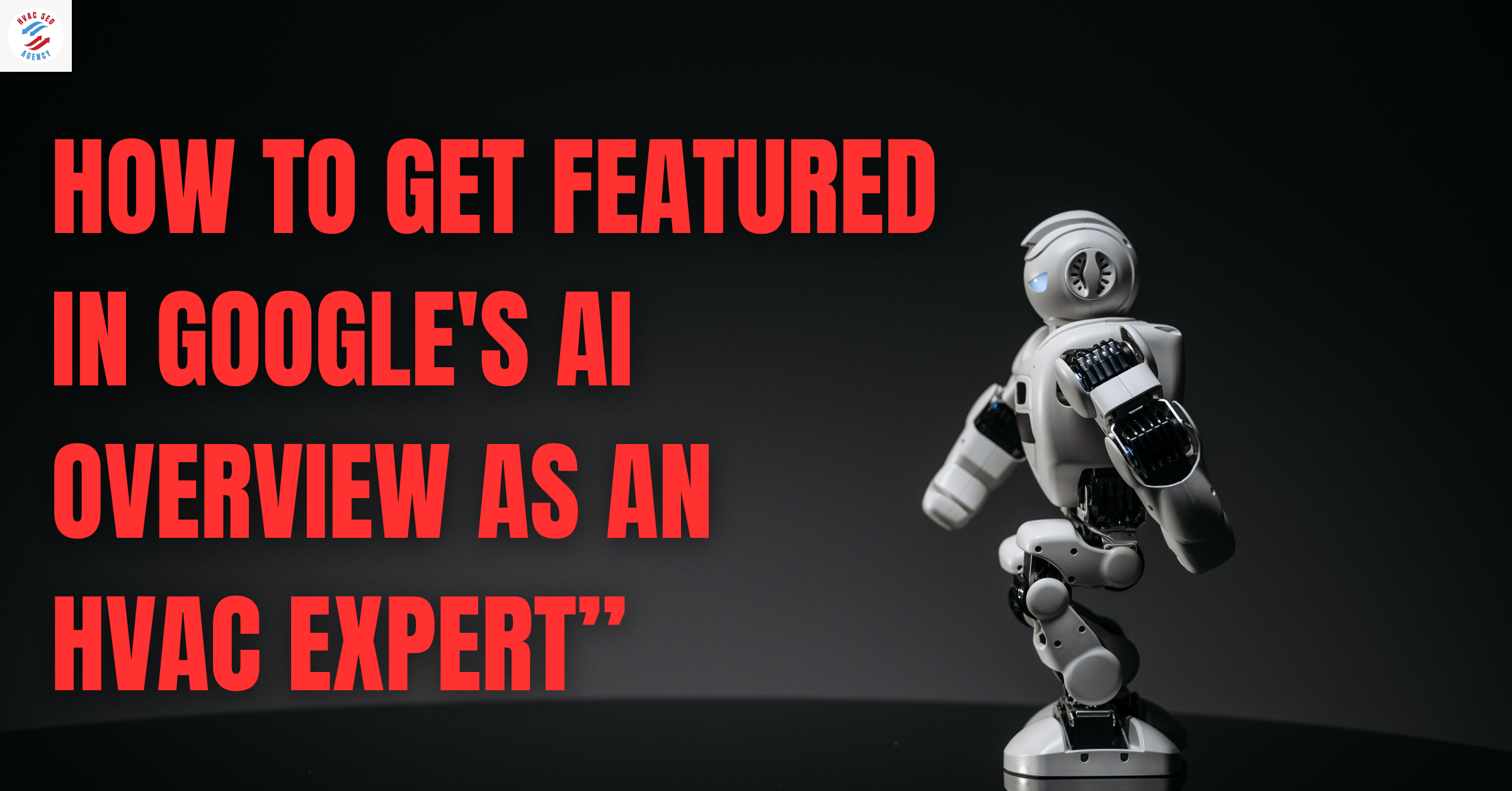Ductwork Installation: Best Practices for Maximum Efficiency

1. Understanding the Importance of Proper Ductwork Installation
When it comes to ductwork installation, efficiency is more than just a buzzword—it’s the foundation of a well-functioning HVAC system. Properly designed and installed ductwork ensures optimal airflow, minimizes energy waste, and maintains indoor comfort. Without it, even the most advanced HVAC system will struggle to perform efficiently, leading to higher energy bills, poor air quality, and frequent system breakdowns. Investing in professional ductwork installation through HVAC SEO Agency can help businesses improve HVAC performance, reduce operational costs, and enhance customer satisfaction.
A well-planned ductwork installation is essential for maximizing HVAC efficiency and ensuring consistent indoor comfort. Poorly installed ducts can lead to leaks, uneven airflow, and excessive strain on HVAC components, ultimately increasing energy costs and reducing system lifespan. By implementing best practices in duct design, proper sealing, and insulation, businesses and homeowners can significantly improve air circulation and energy savings. Partnering with an expert like HVAC SEO Agency ensures that HVAC contractors can reach more clients, optimize their digital presence, and provide top-quality ductwork solutions to their customers.
Why Ductwork Matters in HVAC Efficiency
1. Energy Consumption & Cost Savings
Did you know that up to 30% of energy loss in HVAC systems comes from poorly installed ducts? Leaky ducts force the system to work harder, consuming more power than necessary. A well-sealed HVAC duct sealing process helps maintain pressure and prevents unwanted energy loss.
2. Indoor Air Quality (IAQ) Impact
Faulty ductwork installation can introduce pollutants, allergens, and dust into indoor spaces. Gaps or leaks in duct joints allow unfiltered air from attics, crawl spaces, or basements to circulate, which can affect respiratory health and indoor comfort.
3. System Longevity & Maintenance
Efficient ductwork reduces wear and tear on HVAC components. Systems that compensate for air leaks or improper airflow tend to overwork, leading to frequent repairs and shorter lifespans. Investing in properly installed ducts and regular HVAC duct sealing ensures that HVAC units function optimally for years.
Statistics on HVAC Efficiency & Ductwork Performance
Insight: According to the U.S. Department of Energy, sealing leaks and optimizing ductwork installation can reduce HVAC energy costs by up to 20% annually.
2. Choosing the Right Ductwork Materials for Efficiency
Selecting the right ductwork materials is crucial for maximizing HVAC efficiency. The material used directly impacts airflow, durability, insulation, and energy loss. Many HVAC contractors and businesses overlook this step, leading to higher operational costs and inefficient air distribution.
Comparison of Different Duct Materials
1. Flexible Ducts
Pros: Affordable, easy to install, great for small spaces
Cons: Prone to sagging, airflow restrictions if not properly supported
2. Sheet Metal Ducts
Pros: Best for HVAC efficiency, minimal air resistance, highly durable
Cons: Requires proper insulation to prevent condensation
3. Fiberglass-Lined Ducts
Pros: Noise reduction, built-in insulation
Cons: Can deteriorate over time, releasing fiberglass particles into airflow
4. Duct Board
Pros: Pre-insulated, efficient in maintaining indoor air temperature
Cons: Can absorb moisture, leading to potential mold growth
Best Duct Material Choices by Climate
Avoiding Common Material Selection Mistakes
Many contractors default to flexible ducts due to their ease of installation, but overusing them can compromise airflow efficiency. Free HVAC Website in Houston providers should educate businesses on how choosing the right material impacts long-term operational costs.
3. Best Design Practices for an Efficient Air Distribution System
The efficiency of an HVAC system heavily depends on the ductwork installation and design. A poorly designed duct system can lead to air leaks, pressure imbalances, and increased energy consumption. Following best design practices ensures optimal airflow, energy efficiency, and indoor comfort.
Key Principles of Effective Duct Design
A well-planned ductwork installation should follow these essential principles:
Correct Duct Sizing
Using Manual D calculations ensures the right duct size for airflow efficiency.
Undersized ducts cause pressure imbalances, forcing HVAC systems to work harder.
Oversized ducts lead to poor airflow velocity, reducing heating and cooling efficiency.
Minimize Bends and Restrictions
Sharp bends create turbulence, restricting airflow.
Use long-radius elbows instead of tight turns.
Zoning for Multi-Room Buildings
Multi-zone systems allow better airflow control in large spaces.
Dampers should be strategically placed to regulate temperature efficiently.
Static Pressure Considerations
Proper static pressure ensures consistent air movement throughout the system.
High static pressure can lead to restricted airflow and system strain.
Seal All Duct Joints
HVAC duct sealing prevents leaks and energy loss.
Use mastic sealant or foil tape instead of standard duct tape.
Duct Shape & Efficiency Comparison
Impact of Duct Shape on Airflow Performance
A well-designed ductwork installation must take into account the shape of ducts to optimize airflow and efficiency. The following graph compares airflow resistance in different duct shapes:
4. Airflow Optimization: Balancing Supply and Return Ducts
Optimizing airflow balance is crucial in ductwork installation. A well-balanced system ensures consistent temperature distribution and prevents energy loss. Supply ducts deliver conditioned air, while return ducts remove stale air both must be properly positioned and sized for peak efficiency.
Strategies to Ensure Even Air Distribution
1. Balance Supply and Return Vents
Unbalanced duct systems lead to pressure issues, affecting airflow.
Each supply vent must have a corresponding return vent for smooth air circulation.
2. Using Dampers for Airflow Control
Manual dampers allow adjustments to airflow distribution.
Automatic dampers work with smart HVAC systems for better energy efficiency.
3. Preventing Hot & Cold Spots
Uneven airflow can create temperature fluctuations in different rooms.
HVAC duct sealing and proper insulation help maintain consistent temperatures.
Case Study: Energy Savings from Proper Duct Balancing
A real-world case study analyzed HVAC performance before and after implementing balanced airflow techniques:
5. Sealing and Insulation: Preventing Energy Loss
A well-sealed and insulated duct system is one of the most important factors in ductwork installation. Without proper HVAC duct sealing, air leaks can cause energy loss, uneven heating or cooling, and higher electricity bills. Insulation ensures that conditioned air stays at the right temperature, improving overall HVAC efficiency.
Common Duct Leakage Problems & Solutions
Leaky ductwork is one of the leading causes of HVAC inefficiency. Even the best HVAC system cannot perform well if the ducts allow air to escape before reaching the vents.
How to Identify Duct Leaks
Uneven temperatures in different rooms
Higher-than-usual energy bills
Weak airflow from supply vents
Dust buildup near vents due to unfiltered air entering the system
Best Methods for HVAC Duct Sealing
Cost vs. Savings of Proper Sealing & Insulation
6. The Role of Proper Duct Sizing in HVAC Efficiency
Duct sizing plays a vital role in HVAC performance. Incorrectly sized ducts can lead to restricted airflow, inefficient heating or cooling, and increased system strain. Ensuring that ducts are properly sized during ductwork installation helps maintain optimal air circulation and energy efficiency.
Consequences of Incorrect Duct Sizing
Undersized Ducts
Cause high static pressure, reducing airflow
Lead to noisy HVAC operation
Overwork HVAC components, shortening system lifespan
Oversized Ducts
Lower air velocity, leading to inefficient heating/cooling
Create uneven airflow distribution
Increase energy consumption as the system works harder to push air
Graph: Airflow Performance Based on Duct Size
7. Installation Best Practices to Prevent Airflow Issues
Even the most efficient ductwork installation can fail if the installation process is not followed correctly. Poorly installed ducts can cause air leaks, imbalanced airflow, and energy loss, making it crucial to adhere to best installation practices for optimal HVAC efficiency.
Checklist for Proper Installation
A successful ductwork installation must follow these key guidelines:
Secure All Duct Connections
Proper HVAC duct sealing with mastic or foil tape prevents air leaks.
Use screws or clamps to hold duct joints securely in place.
Avoid Excessive Bends and Sharp Turns
Sharp bends increase static pressure, restricting airflow.
Use long-radius elbows instead of tight 90-degree turns.
Support Flexible Ducts Properly
Flexible ducts should be stretched out fully to prevent sagging.
Secure with metal straps or hangers every 4-5 feet.
Test for Airflow and Pressure Post-Installation
Conduct airflow testing to ensure even distribution.
Check static pressure levels to avoid system strain.
Data-Backed Study: Impact of Poor Installation vs. Best Practices
8. The Role of Ventilation and Return Air Placement in Efficiency
Proper ventilation and return air placement are essential for maintaining balanced air circulation in an HVAC system. Many HVAC systems fail due to poorly placed return ducts, which disrupt airflow and cause hot or cold spots in buildings.
How Poor Vent Placement Leads to Short Cycling
Short cycling occurs when the HVAC system turns on and off frequently, reducing efficiency and increasing wear and tear.
Causes of Short Cycling Due to Poor Ventilation:
Return vents placed too close to supply vents (recycling conditioned air too quickly).
Blocked or undersized return ducts, causing pressure imbalances.
Insufficient number of return vents, leading to uneven airflow.
Best Practices for Optimizing Vent Placement
Return Vents Should Be Centrally Located
Prevents uneven cooling or heating.
Allows air to circulate properly throughout the space.
Ensure the Right Number of Return Vents
Large buildings need multiple return vents for proper air balancing.
Small homes should have at least one return vent per major area.
Avoid Placing Vents Behind Furniture or Obstructions
Blocked vents trap conditioned air, reducing efficiency.
Comparative Analysis: Balanced vs. Unbalanced Airflow Systems
9. Common Ductwork Mistakes That Reduce Efficiency
Even with the best ductwork installation, common mistakes can lead to poor airflow, energy waste, and increased HVAC maintenance costs. Many contractors and homeowners unknowingly make errors that compromise system efficiency, leading to higher utility bills and frequent repairs. Avoiding these mistakes ensures long-term HVAC performance and comfort.
Mistakes to Avoid in Ductwork Installation
1. Poor Sealing and Unsealed Joints
Issue: Air leaks cause 20-30% of energy loss, leading to higher operating costs.
Solution: Use mastic sealant or foil tape for HVAC duct sealing, instead of regular duct tape, which deteriorates over time.
2. Misalignment of Duct Sections
Issue: Gaps between duct sections create air leaks and reduce efficiency.
Solution: Ensure tight connections and use mechanical fasteners to hold duct sections together.
3. Using the Wrong Type of Duct Material
Issue: Flexible ducts are often used inappropriately, leading to airflow restrictions.
Solution: Rigid sheet metal ducts are ideal for high-efficiency systems.
4. Ignoring Static Pressure Calculations
Issue: Improperly sized ducts cause high static pressure, making it harder for air to flow.
Solution: Use Manual D calculations to size ducts properly.
5. Not Insulating Ducts in Unconditioned Spaces
Issue: Uninsulated ducts in attics, crawl spaces, and basements lead to heat loss or heat gain.
Solution: Install duct insulation with the right R-value for climate conditions.
Real-World Example: Before & After Fixing Duct Issues
10. Maintaining Ductwork for Long-Term Efficiency
Regular duct maintenance is essential for keeping HVAC systems efficient and indoor air quality high. Over time, dust, dirt, and debris accumulate in the ducts, reducing airflow and forcing the system to work harder. Proper maintenance extends the lifespan of HVAC components and prevents costly repairs.
Duct Cleaning & Maintenance Best Practices
1. How Often Should Ducts Be Inspected?
Recommended Schedule:
Residential homes: Every 2-3 years
Commercial buildings: Every 1-2 years
2. Signs That Ducts Need Maintenance
Increased energy bills without explanation
Uneven airflow in different rooms
Excessive dust buildup near vents
Musty or moldy odors coming from vents
3. Steps for Proper Duct Maintenance
Check for leaks and apply HVAC duct sealing where needed.
Clean or replace air filters every 1-3 months.
Inspect and remove dust buildup from ducts and vents.
Ensure vents and returns are unobstructed for proper airflow.
HVAC Maintenance Checklist for Homeowners & Contractors
11. Future Trends in Ductwork Installation & Efficiency
The HVAC industry is evolving rapidly, with new technologies aimed at improving ductwork installation and efficiency. As energy regulations tighten and consumer demand for high-efficiency HVAC systems grows, contractors and businesses must stay ahead of emerging trends. Future advancements in duct design, materials, and automation will revolutionize airflow management, HVAC duct sealing, and installation processes.
Emerging Technologies in Ductwork Installation
1. Smart Dampers & Zoning Systems
Traditional HVAC systems operate at a fixed capacity, often leading to energy waste.
Smart dampers adjust airflow automatically, distributing air efficiently based on room occupancy.
Zoning systems allow users to control temperatures in different rooms, reducing unnecessary energy use.
2. AI-Powered HVAC Monitoring & Predictive Maintenance
AI-integrated HVAC systems can detect airflow issues and suggest duct sealing improvements before problems arise.
Predictive maintenance tools analyze static pressure, temperature fluctuations, and airflow efficiency, helping HVAC businesses optimize performance.
3. Eco-Friendly & Sustainable Duct Materials
With a shift towards green building practices, new duct materials are being developed:
Aerogel Insulated Ducts: Lightweight, superior insulation, and moisture-resistant.
Recyclable Metal Ducts: Lower carbon footprint and longer lifespan.
4. Ductless HVAC Alternatives & Hybrid Solutions
While traditional ductwork installation remains essential, ductless mini-split systems are gaining popularity for energy-efficient heating and cooling.
Hybrid solutions combine ducted and ductless technology to offer flexible airflow options for different building layouts.
Forecast: Energy Savings from Advanced HVAC Technologies (2025-2030)
Along with proper ductwork installation, choosing the right HVAC refrigerants plays a crucial role in maintaining energy efficiency, indoor air quality, and environmental compliance. The transition to eco-friendly refrigerants is becoming essential for HVAC systems to meet new industry regulations and sustainability goals.
Beyond efficient ductwork installation, selecting the right HVAC software for your business can streamline system design, load calculations, and project management, helping HVAC contractors improve workflow efficiency and customer service. Advanced software solutions assist in automating duct sizing, energy modeling, and predictive maintenance, ensuring precise and optimized HVAC performance.
12. FAQs
1. What is the best ductwork material for HVAC efficiency?
The best material depends on climate conditions and application:
Sheet Metal Ducts – Best for residential and commercial HVAC systems, offering high durability and airflow efficiency.
Duct Board – Ideal for cold climates, as it retains heat better than metal ducts.
Flexible Ducts – Useful for short runs but should be limited to prevent airflow restrictions.
Pro Tip: HVAC duct sealing is crucial regardless of material—proper sealing can prevent 20-30% of energy loss.
2. How much energy is lost due to poor ductwork installation?
According to the U.S. Department of Energy, leaky ducts can waste up to 30% of conditioned air. This happens due to:
Unsealed duct joints and gaps
Improperly sized ducts creating static pressure issues
Lack of insulation in unconditioned spaces
Solution: Investing in professional HVAC duct sealing and duct insulation can cut energy waste by up to 40%.
3. How do I check if my ducts are leaking?
Homeowners and HVAC professionals can identify leaks by:
Performing a smoke test – Release non-toxic smoke near duct joints and observe if air pushes it out.
Using a duct leakage test – A professional blower door test detects leaks through pressure monitoring.
Inspecting for dust buildup – Leaks often pull in dust from attics and crawl spaces, reducing indoor air quality.
Quick Fix: Mastic sealant is the best solution for long-lasting HVAC duct sealing.
4. What are the most common duct installation mistakes?
The most frequent errors in ductwork installation include:
Incorrect duct sizing, leading to poor airflow and energy inefficiency.
Too many bends and restrictions, increasing air resistance.
Neglecting HVAC duct sealing, causing major energy loss.
Improper return air placement, leading to short cycling and uneven heating/cooling.
5. Should I insulate my HVAC ducts?
Yes! Duct insulation is essential for:
Preventing heat loss/gain in attics, crawl spaces, and garages.
Reducing condensation that can lead to mold growth.
Enhancing HVAC efficiency, especially in hot and cold climates.
Best Insulation Materials for HVAC Ducts:
Proper ductwork installation is the foundation of an energy-efficient, high-performing HVAC system. Whether in residential homes, commercial buildings, or industrial spaces, a well-designed and correctly installed duct system ensures optimal airflow, reduced energy waste, and enhanced indoor comfort.
Key Takeaways for HVAC Professionals & Homeowners
Ductwork efficiency impacts energy consumption – Leaky, uninsulated, or improperly sized ducts can lead to 30% or more energy loss.
Choosing the right duct material matters – Sheet metal, flexible ducts, duct board, and fiberglass-lined ducts all serve specific purposes based on climate and application.
Proper duct sizing prevents system inefficiencies – Undersized ducts restrict airflow, while oversized ducts reduce efficiency. Following Manual D calculations ensures the right size.
HVAC duct sealing and insulation are non-negotiable – Sealing air leaks with mastic and insulating ducts in unconditioned spaces prevents unnecessary energy waste.
Smart HVAC technology is the future – AI-driven predictive maintenance, smart dampers, and hybrid HVAC systems are transforming ductwork efficiency.






